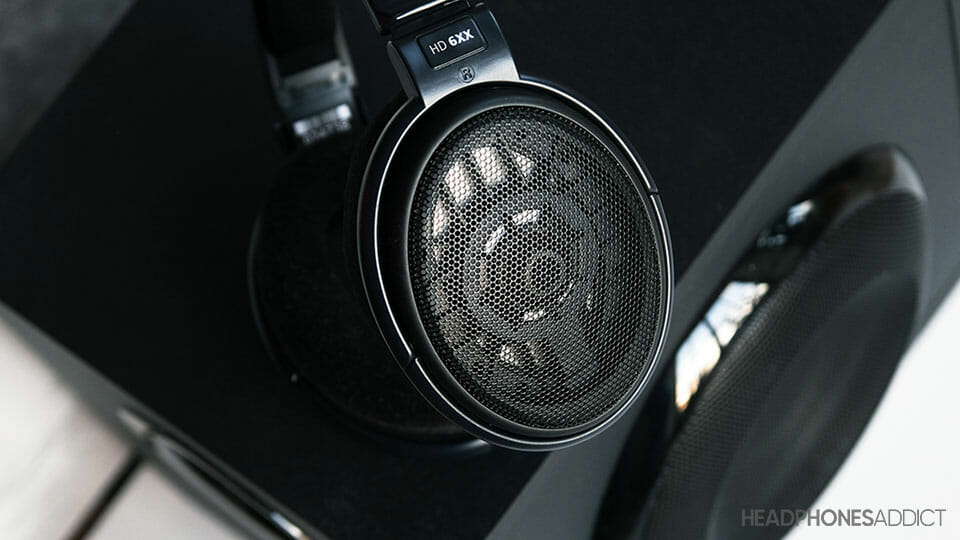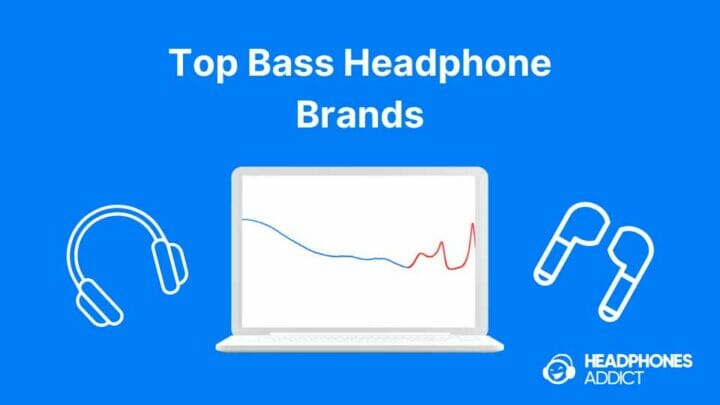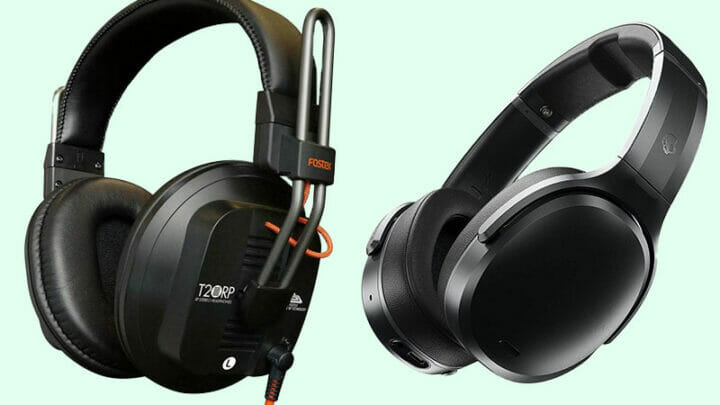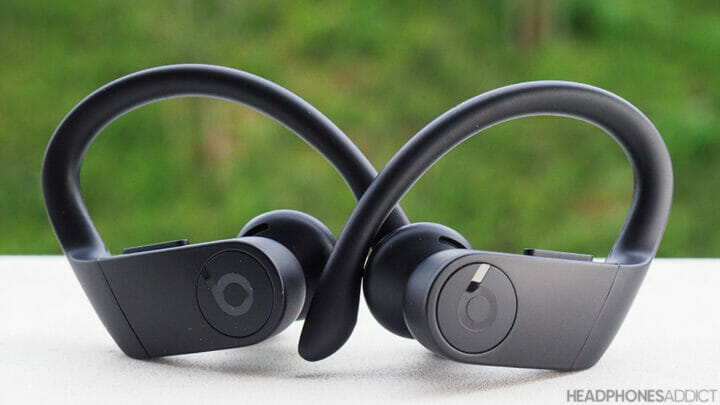When trying a fresh pair of headphones or speakers, most people check out the bass. But do you really know what bass is and how to determine its quality?
In this article, you will learn everything about bass:
- How each type of bass affects your music by changing its quantity
- How to determine the bass quality and how to avoid audio bass distortion
- Why do people enjoy loud bass so much, and is it harmful to our ears

What is Bass Quality?
Bass quality is the ability to faithfully reproduce low frequencies in the audio without losing details. Unlike sound quality, which represents the reproduction quality of the entire hearing range.
The video below shows the difference between good and bad bass quality:
Like other frequencies, the low end can also be nuanced and detailed.
Impeccable bass quality will let you distinctly hear the bass guitar strings, slight variations in lower frequencies and rumble, and individual drum kicks.
While it doesn’t sound much, hearing all these things helps immerse you into music as if the band is playing right before you.
There are a couple of things that determine the quality of bass:
- Headphones’ design
- Technical capabilities of the driver/speaker
- The audio tuning, a.k.a. the sound signature
We will get into more details later.
What is bass frequency range?
The bass frequency range expands between 20Hz and 250Hz and separates into 3 sub-regions. See graf below.
What’s the difference between bass frequency: range vs. response?
The frequency range tells you all the frequencies headphones are able to reproduce (normal headphones have a frequency range of 20Hz to 20.000Hz).
In contrast, frequency response tells you how frequencies “behave” within a frequency range. Basically, which ones are louder, and which ones are quieter.
What is considered a good bass frequency response?
Good bass frequency response shouldn’t deviate too much from the neutral target and shouldn’t have any random peaks and dips.
Objectively, you will achieve the best bass quality if your headphones are neutrally tuned.

Lower frequencies pack more energy than higher ones. If you boost them, they will overpower each other, masking the details and nuances.
However, subjectively, neutral tuning can sound boring to most people. In practice, a little bass boost doesn’t hurt that much, especially if headphones use quality drivers.
What is Bass Quantity?
Bass quantity refers to how much energy low frequencies have or how boosted they are. Or, in simple terms, how much bass headphones have.
The quantity can vary from no bass to too much that you hardly hear anything but rumble.
The video below shows how the same song sounds with a lot and very little bass quantity:
If you’re looking for headphones with bass quantity, look at the top bass headphones and bass earbuds guide.
Headphones for different use should have different bass quantity.
For example:
- Mixing headphones should have a neutral bass response, meaning its quantity is right about where humans start hearing low frequencies.
- Studio headphones can have slightly more bass since their job is to monitor vocals/instruments, so their accuracy is optional.
- Best headphones for consumers typically range from slight to enormous bass boost since they’re meant for entertainment and not critical listening.
Related: How to boost bass on your headphones and earbuds
How humans perceive bass
Low frequencies require more energy to produce, especially since they have to be louder for humans to hear. The Fletcher Munson curve or equal-loudness contour better visualizes that.

The curve states that to humans, 30Hz at 100dB is equally loud as 4000Hz at 92dB. You can also see that this ratio changes depending on the volume.
| How loud it has to be at 30Hz… | … to feel equally loud at 4kHz |
|---|---|
| 64dB | -18dB |
| 69dB | 3dB |
| 74dB | 15dB |
| 76dB | 26dB |
| 79dB | 37dB |
| 81dB | 47dB |
| 85dB | 58dB |
| 87dB | 66dB |
| 89dB | 75dB |
| 94dB | 84dB |
| 100dB | 92dB |
| 111dB | 101dB |
| 128dB | 110dB |
That’s why speaker units always have more powerful bass drivers than tweeters.
For example, the subwoofers at the concert are usually between 1000W to 2000W each, whereas midrange speakers range between 200W to 400W per unit.
What is Audio Bass Distortion?
Audio bass distortion is when you hear a cracking sound in a bass punch. And technically, anything that changes or adds to the low frequencies from the speaker to your eardrums is considered a distortion.
Here’s a comparison of normal vs. distorted bass:
Audio bass distortion caused by a headphone driver
When a headphone speaker cone can’t handle the vibrations, it starts producing buzzing noises.
There are a few reasons why this happens:
- Too much bass: to produce louder bass, a cone has to vibrate more violently, but at some point, it reaches its physical limit and starts buzzing and rattling
- Too much volume: even without a bass boost, raising the loudness pushes the driver to its physical limits, which causes it to buzz and rattle
- Lower-quality drivers can start buzzing and rattling even at moderate volumes; you usually find them in very cheap products

Audio bass distortion caused by design
Anything from a room speaker enclosure to ear cups or earbud housing is designed to shape the sound in a controlled way.
That is how engineers prevent resonant frequencies from boosting uncontrollably when listening to music.
However, some designs can sometimes fail, especially when you push them to the limit. That usually happens when you start tweaking the frequency response or raising the volume.
At that point, a specific frequency (low frequencies included) boosts volume, distorts, and becomes muddy.
Types of Bass
Bass or lower frequencies can separate into 3 frequency groups: sub-bass, mid-bass, and upper bass. Each frequency group plays a vital role in audio.
We made audio samples, each missing a specific bass group, so you can more easily understand their differences. We intentionally picked a more bassy track.
Here’s a video showing how different bass regions affect your music:
Sub-bass (20Hz-50Hz)
This is the lowest audible frequency range. It’s common in modern music, especially in electronic and hip-hop genres.
While we can still hear frequencies between 50Hz and 30Hz, we usually just feel the very lowest ones.
Apart from synthesized sub-bass in modern music, instruments that can reach that low are bass guitars and pianos.
Here is how a sample track sounds with the sub-bass set to -15dB:
Mid-bass (50Hz-100Hz)
Frequencies around 60Hz and 80Hz are primarily responsible for creating a bass punch.
Apart from a kick drum, acoustic guitars can also reach below 100Hz.
The mid-bass region is where open-back headphones and most outdoor Bluetooth speakers start losing power and quickly roll off without reaching sub-bass.
Interestingly, most outdoor speakers tend to boost this region before rolling off to make the bass punch louder.
Here’s how a sample track sounds with the mid-bass set to -15dB:
Upper-bass (100Hz-250Hz)
The upper region, while still contributing to some punch, primarily adds warmth and makes the sound fuller. Deep male vocals significantly benefit from added warmth.
However, too much energy in the upper bass leads to muddiness (when the excessive bass starts masking midrange frequencies).
Here’s how a sample track sounds with the upper bass set to -15dB:
How Does Bass Affect Sound Quality
Lower frequencies are an essential component of music.
While a regular person can listen to neutrally tuned midrange and treble without missing too much, music without bass is simply dull.
Bass adds music rhythm, beat, a natural timbre, and warmth. It makes the listening experience more pleasing and exciting.
Impact of bass on music genres
On top of adding “flavor” to the sound, different bass quantities can increase the listening enjoyment of specific music genres.
- For example, music genres that benefit from bass boost are electronic, pop, and hip hop.
Their sound mainly consists of bass notes and vocals, with high-frequency effects to balance everything. Therefore, a powerful punch automatically forces you to start banging your head.
- On the other hand, music genres like rock, classical, or jazz actually prefer to stay neutral to sound the best.
These genres contain more instruments in different frequency ranges, so any bass boost would only make them sound muddy and hard to hear.
How bass affects the balance of sound quality
The lack of bass can make your music sound dull and lifeless.
We made a video below demonstrating how bass affects the music by lowering it by -10dB, -20dB, and -30dB:
Can too much bass negatively impact audio quality?
Too much bass can negatively impact audio quality by introducing muddiness in the bass and midrange, masking all the details in the process.
Here is an example of overly bassy headphones:
And here is an example of natural-sounding headphones:
Why Does Heavy Bass Sound So Good?
Based on scientific research from the University of California and Jyväskylä, humans are naturally “programmed” to move their bodies when listening to music with loud bass.
And when we dance, we instinctively focus on the bass beat to sync with the rhythm.
That explains why so many people like bassy music genres. They are the most “danceable.”
Can Too Much Bass Damage Ears?
Too much bass alone can not damage your ears at a healthy volume. But boosting bass often leads to an increase in loudness, which can lead to hearing damage.
Loudness below 80dB is considered a safe listening volume. Going above that can cause permanent hearing damage after a certain period.
The higher the listening volume, the quicker the hearing damage occurs.
Interestingly, even though bass has to be louder for humans to hear (as mentioned above in how humans perceive sound), it doesn’t hurt your ears more than other frequencies.
Related: How to make headphones/earbuds louder

Since it’s difficult to determine if your headphones are too loud just by listening, Apple implemented a neat Headphone Audio Level feature in iOS and Apple AirPods Max.
Headphones use the internal microphone to measure the loudness, which is then visible in iOS next to volume adjustments.
How To Check the Quality of Bass in Headphones and Earbuds
The easiest way to check the bass quality is by carefully listening to music.
To check the bass quality during our reviews, we like to listen to some fast-paced metal and heavy bass guitar songs. Essentially, we’re looking for small details and nuances in low frequencies.
Fast drumming and double-pedals in metal music easily mush together if the bass isn’t controlled.
The same goes for string plucks on a bass guitar, which can get lost in the mix if the bass is boosted.
Compare the bass details of your headphones with what you’d expect from perfect sound.
But I’m not experienced!
Well, unless you are an audio engineer or an experienced audiophile with years of experience, testing bass quality by yourself is unreliable.
The main issue is your brain, which can adapt to whatever you’re listening to. If you enjoy loud bass, that’s what you will perceive as good quality since everything else will sound bland. And that’s fine, as long as you’re satisfied with the sound.
If you aren’t sure whether your headphones have too much bass or not, try finding frequency measurements (we measure every headphone we review).
Frequency response measurement
Measurements will show you the bass quantity. As mentioned above, a little bit of bass boost doesn’t hurt. However, a massive boost certainly muddies the sound.
An example of balanced frequency response:

An example of a very bassy frequency response:

Making a frequency measurement requires special measuring tools like artificial ears with microphones. The price of such equipment ranges from a few hundred to tens of thousands of dollars. And you also need software that can interpret the measurements.
There are already many measurements available on the internet.
But remember that the measurement doesn’t show the headphone’s bass quality. For example, Beats Flex have a balanced frequency response but bad technical performance.
Here’s more on bass headphones and what to expect.
Frequently Asked Questions (FAQ)
Is bass low or high Hz?
Bass is located in low Hz. Typically, between 20Hz and 250Hz. Frequencies below 20Hz fall into infrasound and are inaudible to humans, but you can still feel them if they’re loud enough.
Is 200Hz a bass?
200Hz still falls into the bass frequency range. Upper bass, to be more precise.
Is 40Hz a bass?
40Hz is a part of the bass frequency range. More accurately, 40Hz falls into the sub-bass.
Does bass improve sound quality?
Rather than bass improving sound quality, it can improve sound enjoyment. Of course, that is purely subjective. On the other hand, good bass quality can improve the overall sound quality.
Read more:
Conclusion
Hopefully, you better understand what bass is and how it affects your music.
A bass boost will give you enjoyment and uplift your mood, whereas a quality bass will reveal hidden details and nuances and immerse you in your music.
With this knowledge, you’re ready to go on a journey of rediscovering your favorite songs.

From a childhood fascination with sound, Peter’s passion has evolved into a relentless pursuit of the finest headphones. He’s an audio expert with over 5 years of experience in testing both audiophile and consumer-grade headphones. Quote: “After many years, I can confidently tell which headphones are good and which are terrible.” Find his honest opinion in his reviews.










